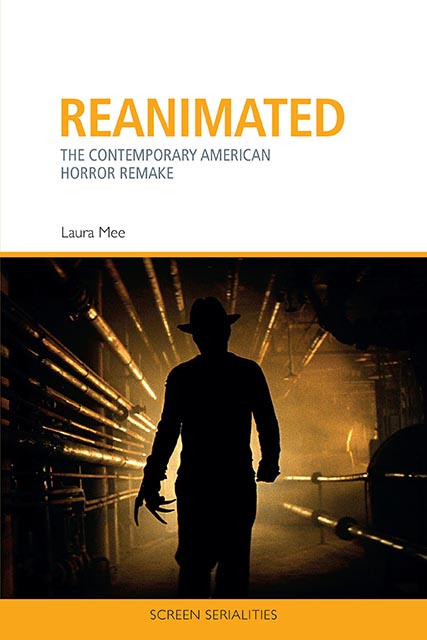Book contents
- Frontmatter
- Contents
- List of Figures
- Acknowledgements
- Chapter 1 Horror Reanimated: The Rise of the Remake
- Chapter 2 Defining and Defending the Horror Remake
- Chapter 3 Re-Writing Horror Mythology in the Platinum Dunes Reboot
- Chapter 4 Distinction and Difference in the Slasher Remake
- Chapter 5 Cultural Anxieties and Ambiguities in Post-9/11 Remakes
- Chapter 6 Gender and Genre in the Rape-Revenge Remake
- Conclusion. ‘The Devil Never Dies’: Recent Horror Remakes
- Bibliography
- Films and Television Programmes
- Index
Chapter 1 - Horror Reanimated: The Rise of the Remake
Published online by Cambridge University Press: 10 August 2023
- Frontmatter
- Contents
- List of Figures
- Acknowledgements
- Chapter 1 Horror Reanimated: The Rise of the Remake
- Chapter 2 Defining and Defending the Horror Remake
- Chapter 3 Re-Writing Horror Mythology in the Platinum Dunes Reboot
- Chapter 4 Distinction and Difference in the Slasher Remake
- Chapter 5 Cultural Anxieties and Ambiguities in Post-9/11 Remakes
- Chapter 6 Gender and Genre in the Rape-Revenge Remake
- Conclusion. ‘The Devil Never Dies’: Recent Horror Remakes
- Bibliography
- Films and Television Programmes
- Index
Summary
On its opening weekend, The Texas Chainsaw Massacre (Marcus Nispel, 2003) secured both the top spot at the domestic box office and some brutal reviews. While the film was not universally panned, the opprobrium that some critics levelled at this remake of Tobe Hooper's 1974 film was explicit. Roger Ebert (2003) described it as ‘vile, ugly and brutal’, suggesting that the film ‘wants to tramp crap through our imaginations and wipe its feet on our dreams’. It was ‘made with venom and cynicism’, he argued, and he doubted ‘that anybody involved in it will be surprised or disappointed if audience members vomit or flee’. Others complained it was ‘suped up and overly stylized’ (Foundas 2003), ‘painfully derivative’ (Kehr 2003) and ‘the most gruesome, most pointless, episode of “Scooby Doo” ever’ (Morris 2003). In Sight & Sound's final issue of 2003, Mark Kermode lamented the ‘textbook disembowelling of a once unruly genre classic’, reflecting on Chainsaw as part of a ‘dispiriting model of 30-year industrial recycling’ (16). Complaints about contemporary horror's genericity, formulaicity, seriality and self-referentiality are common, even among those who (like Kermode) profess their love for the genre. Horror cinema, so the argument goes, is prone to recycling, regurgitation and rebirth, but also appears to be under some persistent illusory threat from its own popular cycles, forms and styles – the slasher film, found footage, torture porn, ‘elevated’ horror and remakes alike. The genre is the eternal victim of its own imagined villains. Horror is somehow forever dying and continually reanimated.
The criticism levelled at The Texas Chainsaw Massacre indicated what was to come. Its success inspired a raft of new horror remakes throughout the 2000s and 2010s, as American studios recycled old versions of domestic and international genre films, both for theatrical release and direct-to-home-video. While Hollywood recycling was not a new phenomenon, the trend for remaking horror cinema became seemingly so pervasive that, for many fans, critics and scholars alike, it represented a tiresome exercise in reproducing and rebranding cherished films which challenged the memory or status of those originals. Horror remakes were lambasted as purposeless, artless and meaningless duplicates churned out by cynical studio executives. Critics like Kim Newman (2009b) wearily suggested that the trend was symptomatic of mainstream cinema ‘swallowing its tail to the point where the finite number of remakable films will run out’.
- Type
- Chapter
- Information
- ReanimatedThe Contemporary American Horror Remake, pp. 1 - 20Publisher: Edinburgh University PressPrint publication year: 2022



